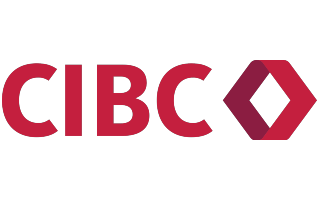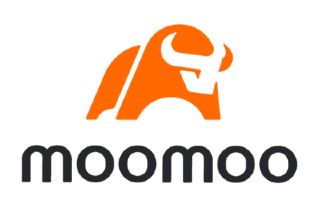While these exchange-traded funds (ETFs) boast similar names and track the same index, the QQQ is better suited to passive investors, while day traders and otherwise active investors may be better off trading the TQQQ. But the best choice for you will ultimately depend on a myriad of factors.
What is the TQQQ?
The ProShares UltraPro QQQ (TQQQ) is a leveraged ETF that tracks the Nasdaq 100. It was created in 2010 and, as of June 2020, had over USD $4.31 billion in assets under management. The fund uses a complex combination of futures, swaps and borrowed money to amplify the movement of the index tracks—in this case, the Nasdaq.
The TQQQ is designed to triple the daily returns of the Nasdaq so that a 1% gain by the Nasdaq would theoretically result in a 3% gain for TQQQ stock investors.
The fund’s expense ratio is 0.95% and returns quarterly distributions to investors.
What is the QQQ?
The Invesco Trust (QQQ) is an ETF that passively tracks the Nasdaq 100. The fund was created in 1999 and, as of June 2020, was the second-most traded ETF in the US. Between 44% and 47% of its holdings are tech stocks, with the rest of the fund divided up between communications, healthcare, consumer discretionary and industrial stocks.
The fund’s expense ratio is 0.2% and returns quarterly distributions to investors.
Is TQQQ a good investment?
By its very nature, the TQQQ is a riskier investment than the QQQ. It aims to amplify the daily returns of the Nasdaq-100 by a factor of three. This means that if the Nasdaq does well, TQQQ stock does really well. And if the Nasdaq drops? Well, the TQQQ plummets by 3X as much.
Because of its volatility, the TQQQ is best used as an intraday investment, which means you buy and sell the fund over the course of a single trading day. This often makes the TQQQ a strong fit for active traders with a high degree of risk tolerance.
Another drawback to consider before you invest is the TQQQ’s expense ratio. Most ETF expense ratios sit at 0.2% or below — like the QQQ. But the TQQQ’s expense ratio is 0.95%. You’ll pay more to invest in this fund, and while it may potentially magnify your gains, it may also widen your losses.
TQQQ performance
The past performance of an ETF is no guarantee of what the fund will do in the future. But tracking the TQQQ may help you compare it to other funds.
The past performance of an ETF is no guarantee of what the fund will do in the future. But tracking the TQQQ may help you compare it to other funds.
Is QQQ a good investment?
The QQQ is considered an aggressive growth fund and is disposed to higher short-term volatility than larger indices like the S&P 500. That said, it’s still considered a viable buy-and-hold investment that has a history of compensating its investors for taking on increased risk with above-average returns.
Historically, QQQ stock has outperformed the S&P 500, with 10- and 15-year returns of 19.8% and 12.8%, beating out the S&P’s 15.4% and 9.1% returns over the same period.
The QQQ is a way to incorporate tech stocks into your portfolio while also adding exposure to large-cap industrial and healthcare companies. You don’t need to hand-pick or monitor individual stocks — the index does that for you. And the QQQ is typically a more stable investment than the TQQQ, which means it’s suitable to be held long-term.
That said, the QQQ is limited in its scope. Unlike the S&P 500, it only tracks 100 stocks, nearly half of which are tech stocks. Should anything happen to the tech sector, your investment in the QQQ will be put at risk.
QQQ performance
How QQQ stock has performed in the past is no guarantee of future performance. But tracking this fund can help you see how it compares to other ETFs.
How to invest in the Nasdaq from CanadaHow to choose
Before you add either of these funds to your portfolio, consider the following:
- Risk tolerance. The TQQQ is exponentially riskier than the QQQ and is only suitable for investors with a high degree of risk tolerance.
- Timeline. The QQQ may work as either a short- or long-term investment, but the TQQQ is typically an intraday trade.
- Amount of capital. Since the TQQQ uses leverage to amplify returns, you could earn as much or more than QQQ stock investment with less capital.
- Investing experience. If day trading isn’t a routine part of your investment strategy, it may be prudent to skip out on TQQQ stock.
Compare brokerage accounts
To invest in either of these ETFs, you’ll need a brokerage account. Review your options below.
Finder Score for stock trading platforms
To make comparing even easier we came up with the Finder Score. Trading costs, account fees and features across 10+ stock trading platforms and apps are all weighted and scaled to produce a score out of 10. The higher the score the better the platform - simple.
Bottom line
Both the QQQ and TQQQ track the Nasdaq and depend on its performance for returns. But before you add either fund to your portfolio, consider your time horizons and risk tolerance.
Review your account options with multiple brokerages to find the platform that best meets your needs.
Frequently asked questions
More investing guides

What are the best stocks for beginners with little money to invest?
Want to dive into investing but don’t have much to spend? Take a look at these types of stocks.
Read more…
Meme stocks: What they are and examples of popular stocks
Meme stocks can produce large gains in short periods, but the stocks are volatile.
Read more…
How do ETFs work?
Your guide to how ETFs work and whether this type of investment is right for you.
Read more…
How to read stock charts
Learning how to read stock charts and recognize chart patterns can unlock your success as a trader.
Read more…
What are stocks?
Owning a stock means you own part of a company and can potentially grow your wealth. But there is a risk of loss.
Read more…
How to analyze a stock
Learn how to research stocks and find the right investment opportunities in 4 steps.
Read more…More guides on Finder
-
Best day trading platforms in Canada
Compare six brokerage platforms to find the best platform for day trading in Canada.
-
Best renewable energy stocks
These are the best renewable energy stocks to buy now in Canada.
-
Graphene stocks
We’ve rounded up stats on some of the most popular graphene stocks, along with information on how they compare and how to invest.
-
Best stocks to buy right now in Canada
Finder’s unique algorithm found the 20 best TSX stocks to buy right now.
-
10 best trading platforms and apps in Canada for 2025
Whether you’re a new or experienced investor, these are the best stock trading platforms and apps in Canada.
-
How to buy US stocks in Canada
Buying US stocks in Canada is easier than you think. Find out how to buy US stocks in 4 simple steps.
-
How to buy international stocks in Canada
Find out how to buy international stocks in Canada in three easy steps.
-
How to invest in the S&P 500 in Canada
Find out how to invest in the S&P 500 in Canada—one of the world’s most popular stock indices—to diversify your portfolio.
-
Qtrade review
Qtrade offers free trades for 100+ ETFs and discounts for active and young investors. But the platform has some drawbacks.
-
Questrade review
Questrade is a leader among Canadian discount brokerages, but is it right for you? Compare fees, features and alternatives here.



